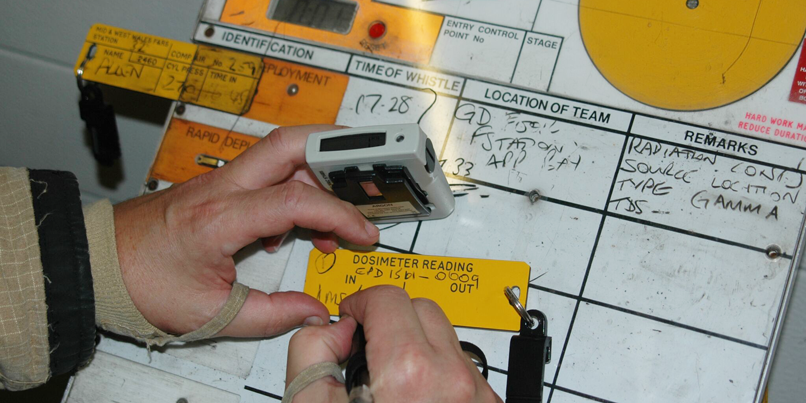
One of the ongoing challenges for CBRN and HazMat training instructors is the creation of realistic, sophisticated and engaging operational scenarios that give emergency crews and first responders hands-on, real-time experience of a range of potential CBRN incidents.
And while historically chemical warfare agent (CWA) training was more likely to have been carried out in private, specialist training areas such as a military base, for first responders there is an increased need for life-like CBRN or HazMat scenarios that can take place in civilian settings.
Simulation training, incorporating the use of simulator detectors, provides one crucial piece of the puzzle, utilising cutting-edge, computer-based simulator technology to replicate how actual devices will react when exposed to a range of invisible or near invisible chemical agents.
The use of electronic simulators provides the opportunity for trainees to become confident and proficient in the handling, reading and interpretation of their devices.
Crucially too, simulator detectors are equipped with built-in after action review (AAR) which enables each device to be assessed at the conclusion of a training exercise so trainees are assured that they have handled and interpreted their equipment correctly.
Key outcomes of CBRN / HazMat training scenarios
In addition to the ability to be able to read and correctly interpret live data, another vital component of hands-on CBRN and HazMat training is the setting up of operational scenarios which enable trainees to experience all the characteristics of a live threat in a completely safe and controlled environment.
Realistic and engaging training exercises that accurately replicate live-action situations are invaluable in building trainees' confidence, helping to improve response times and developing greater situational awareness skills.
For trainers, operational scenarios also deliver key outcomes for effective cbrn and hazmat training, providing an essential testing ground for students' capabilities to ensure that participants are:
- able to respond with speed and certainty
- fully equipped and correctly dressed for their mission
- confident in preparing and using a detector
- able to assess a scene and decide on the best means of approach
- experienced in carrying out a thorough and methodical search of a location
- able to correctly read and interpret an instrument display
- able to accurately report back any readings obtained
- always mindful of their own safety and the safety of those around them
The Mid and West Wales Fire and Rescue Service currently runs two main operational scenarios that are specifically designed for radiation incidents, as outlined in a recent case study.
In their first scenario, emergency crews have been called to assist at the scene of a potential radiation leak where a worker has become unconscious while undertaking pipeline radiography. The crew are tasked with placing a safe cordon around the area and identifying and marking a safe path to the source. They must then make the source safe, identify and mark a safe path to the casualty and effect a rescue.
In scenario two, a delivery van has been involved in a road traffic accident, its cargo has been compromised and a bystander has observed what appears to be a trefoil which would indicate some type of radiation risk. Emergency crews must rescue the unconscious driver, contain the source and make it safe. They must then ensure that the casualty is safe to transport, carry out effective decontamination as required and stabilise the situation for hand over to recovery services.
In this second scenario the emergency teams use a GMP 11 SIM Beta Probe which can be operated either with their training RDS 200 or with an actual operational unit. The GMP probe detects live powders and liquids (all harmless) that can be applied to an area or object. Crews are then able to assess the effectiveness of their safe-working and decontamination process in live time.
As Dai Swan, Head of Response for Pembrokeshire, observes: "Crews have been surprised how easy it is to decontaminate the probe during use, and have realised how important it is to follow strict process and to have excellent communication when decontaminating. This experience is priceless and they visibly exercise differently as a consequence of this learning."
CBRN and HazMat training provides participants with the skills to detect, avoid, protect and respond to a wide range of chemical threats, whether in the context of warfare, civilian incident, industrial accident or as the result of a terrorist attack.
Targeted and well-planned operational scenarios are an essential element of the training process, ensuring increased protection, greater understanding and improved decision-making abilities and contributing to quicker response times, shorter incident duration and a reduction in the impact on communities and economies.
